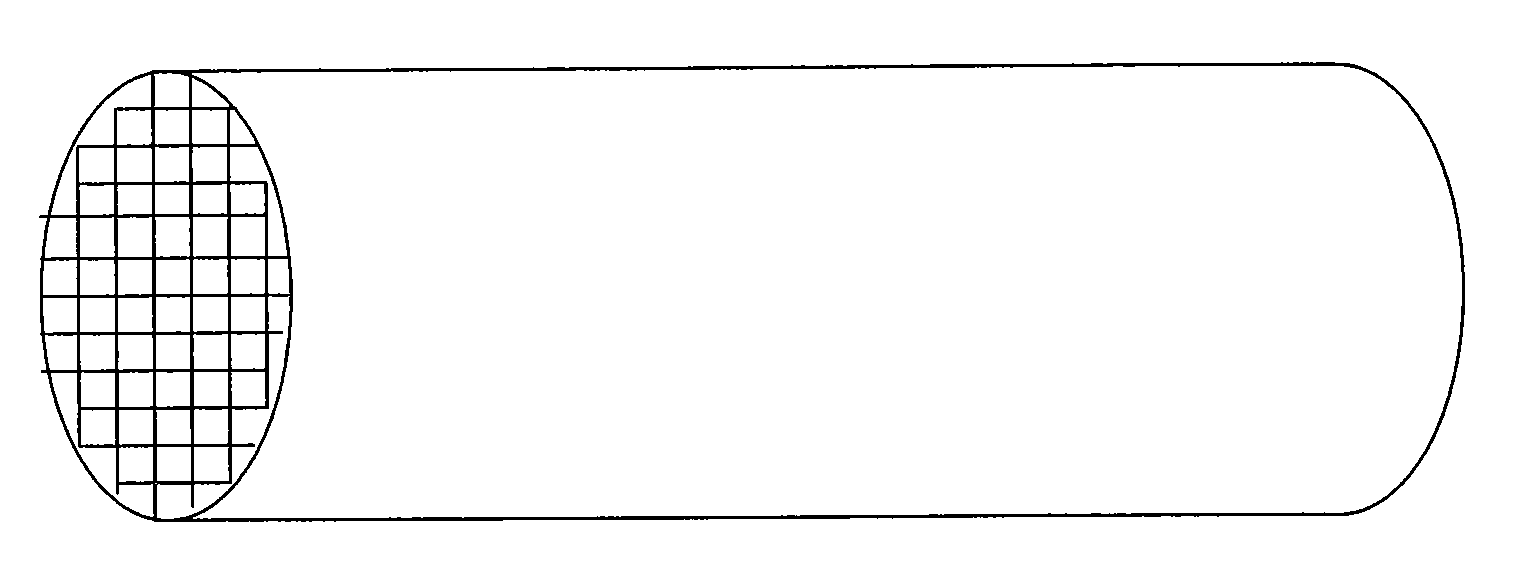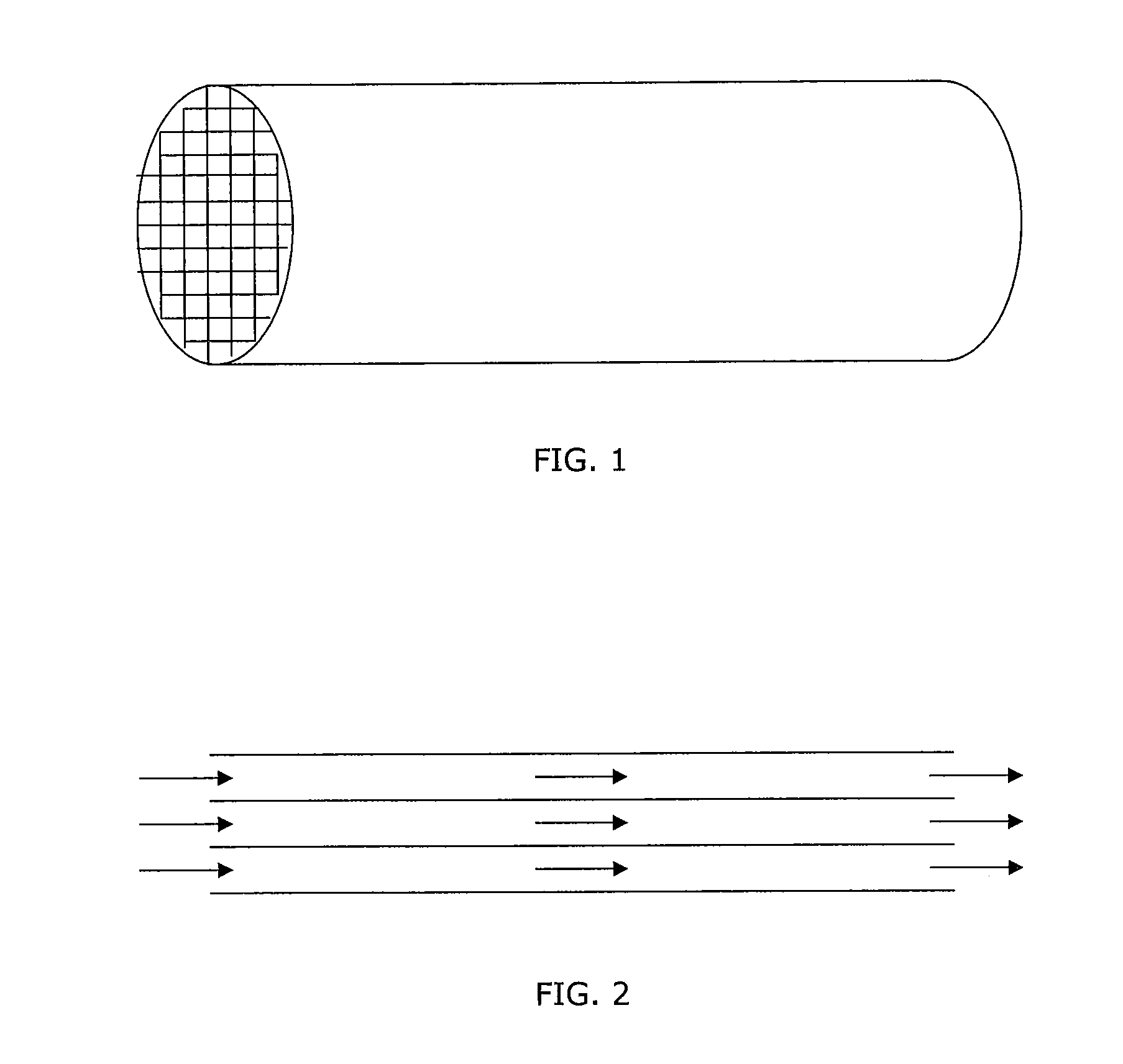Compression ignition engine and exhaust system therefor
a compression ignition and engine technology, applied in electrical control, physical/chemical process catalysts, separation processes, etc., can solve the problems of increased hc and co emissions, sub-optimal active devices, and inability to train engineers
- Summary
- Abstract
- Description
- Claims
- Application Information
AI Technical Summary
Benefits of technology
Problems solved by technology
Method used
Image
Examples
example 1
[0063]A 2 wt % Pt-alumina-based catalyst (Catalyst A), a 2 wt % Pd-alumina-based catalyst (Catalyst B), and a 2 wt % Pd-ceria-containing catalyst (Catalyst C) were tested for HC and CO light-off in a simulated catalyst activity test (SCAT) gas rig. A sample of each catalyst was tested in the flowing gas mixtures set out in Table 1. The temperature of the gas mixtures used was increased during each test from 100° C. to 500° C.
[0064]
TABLE 1Gas mixtures used for activity tests for Catalysts A, B, and CGasGasGasGasMixture 1Mixture 2Mixture 3Mixture 4ppm HC (C1)60090030003000as propeneppm CO2006002500025000ppm NO200200200200% H2O4.54.54.54.5% O21212123% CO24.54.54.54.5ppm SO220202020N2BalanceBalanceBalanceBalanceFlow Rate300300300300(litres / hour / g sample)Ramp Rate10101010(° C. / min)
[0065]Gas mixtures 1 and 2 have HC and CO gas concentrations as typical of exhaust gases from a conventionally operated Diesel engine. Gas mixture 3 has higher HC and CO concentrations than gas mixtures 1 and 2...
example 2
[0070]In another series of activity tests, Catalyst D (1 wt % Pt-alumina-based), and Catalyst E (4 wt % Pd-ceria-based), were tested for HC and CO light-off in a SCAT gas rig using the gas mixtures set out in Table 4, and the temperature of the gas passed over each sample was increased during each test from 100° C. to 500° C.
[0071]
TABLE 4Gas mixtures used for activity tests of Catalysts D and E.GasGasGasGasGasMixture 5Mixture 6Mixture 7Mixture 8Mixture 9ppm HC600600600600600(C1) astolueneppm CO20095020001000025000ppm NO200200200200200% H2O4.54.54.54.54.5% O21212121212% CO24.54.54.54.54.5ppm SO22020202020N2BalanceBalanceBalanceBalanceBalanceFlow Rate300300300300300(litres / hour / g sample)Ramp Rate1010101010(° C. / min)
[0072]For each gas mixture from 5 to 9, the CO concentration was progressively increased and the remaining gases were kept constant with a nitrogen balance. Table 5 shows the effect of CO concentration on the HC and CO light-off of the catalysts.
[0073]
TABLE 5Temperature for...
example 3
[0075]Further SCAT rigs tests on Catalyst D (1 wt % Pt-alumina-based) and Catalyst E (4 wt % Pd-ceria-based) were carried out using the gas mixtures with 25000 ppm CO and two different HC concentrations (using either propene or toluene). A sample of each catalyst was placed in the gas mixtures shown in Table 6, and the temperature of the gas was increased from 100° C. to 500° C. The concentration of HC (as C1) was increased from 600 ppm to 3000 ppm using either propene or toluene as the HC species. The activity of the catalysts tested is given in Table 7.
[0076]
TABLE 6Gas mixtures used for activity tests on Catalyst A and Catalyst C.GasGasGasGasMixture 10Mixture 11Mixture 12Mixture 13ppm HC (C1)600300000as propeneppm HC (C1)006003000as tolueneppm CO25000250002500025000ppm NO200200200200% H2O4.54.54.54.5% O212121212% CO24.54.54.54.5ppm SO220202020N2BalanceBalanceBalanceBalanceFlow Rate300300300300(litres / hour / g sample)Ramp Rate10101010(° C. / min)
[0077]
TABLE 7Temperature for 80% convers...
PUM
| Property | Measurement | Unit |
|---|---|---|
| temperature | aaaaa | aaaaa |
| temperature | aaaaa | aaaaa |
| temperature | aaaaa | aaaaa |
Abstract
Description
Claims
Application Information
 Login to View More
Login to View More - R&D
- Intellectual Property
- Life Sciences
- Materials
- Tech Scout
- Unparalleled Data Quality
- Higher Quality Content
- 60% Fewer Hallucinations
Browse by: Latest US Patents, China's latest patents, Technical Efficacy Thesaurus, Application Domain, Technology Topic, Popular Technical Reports.
© 2025 PatSnap. All rights reserved.Legal|Privacy policy|Modern Slavery Act Transparency Statement|Sitemap|About US| Contact US: help@patsnap.com


